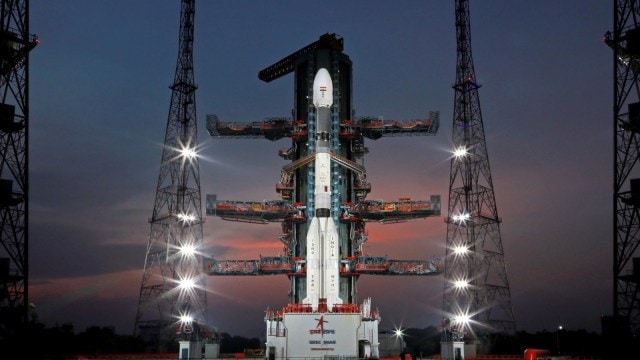The Indian Space Research Organisation (ISRO) is marking a significant milestone with its 100th launch. On January 29 at 06:23 am, ISRO will launch the NVS-02 satellite, a 2,250-kg navigation satellite, aboard the GSLV-F15 from Sriharikota. This mission continues the agency’s ambitious plans to upgrade India’s navigation satellite system.
NVS-02: The Second Satellite in the New Generation
The NVS-02 satellite is the second of five second-generation satellites developed by ISRO. These satellites are intended to replace the older satellites in India’s Indian Regional Navigation Satellite System (IRNSS), also known as NavIC (Navigation with Indian Constellation).
Key Features of NVS-02
- Longer Lifespan: These new-generation satellites have a significantly longer lifespan of 12 years.
- Improved Atomic Clocks: They are equipped with indigenously developed, more accurate atomic clocks, enhancing the system’s reliability and precision.
- L1 Frequency Utilization: The satellites use L1 frequency, commonly used in the US GPS system, which will likely lead to increased use in smaller devices like fitness trackers.
GSLV-F15: The Launch Vehicle
This launch will also be the 17th flight of the Geosynchronous Satellite Launch Vehicle (GSLV) and the 11th to use the indigenously developed cryogenic engine. The mission is expected to last just over 19 minutes, with the satellite being injected into a Geostationary Transfer Orbit (GTO), at 170 x 36,577 km.
The Role of IRNSS (NavIC)
IRNSS, or Navigation with Indian Constellation, is a system of seven satellites providing positioning, navigation, and timing services across the Indian mainland and a 1,500 km radius around it. The first satellite in the constellation, IRNSS-1A, was launched in 2013, with a mission life of 10 years.
Challenges Faced by IRNSS
- Malfunctions in Atomic Clocks: Some satellites in the constellation required replacements even before their mission life ended due to malfunctions in their atomic clocks.
- Launch Failures: One of the replacement satellites, IRNSS-1H, failed to reach orbit due to a malfunction in the heat shield of the PSLV vehicle.
- Underutilization of Services: A report by the Comptroller and Auditor General (CAG) in 2018 criticized the delayed development of user receivers, which led to several years of wasted mission life of the initial satellites.
Progress and Developments
Since the report, significant progress has been made. New receivers and applications for the navigation constellation have been developed. Cellphone chipsets capable of receiving IRNSS data are now available, and several new smartphones can use signals from the Indian navigation system.
The first satellite in the new generation of navigation satellites was launched in May of the previous year, further advancing India’s space capabilities.
Multiple Choice Questions (MCQs):
1. What is the primary purpose of the NVS-02 satellite?
a) To replace older communication satellites
b) To improve weather prediction capabilities
c) To replace older satellites in the IRNSS constellation
d) To explore the moon
Answer: c) To replace older satellites in the IRNSS constellation
2. What is the lifespan of the new-generation navigation satellites like NVS-02?
a) 5 years
b) 10 years
c) 12 years
d) 15 years
Answer: c) 12 years
3. Which frequency is used by the new-generation navigation satellites, including NVS-02?
a) L2 frequency
b) L1 frequency
c) L3 frequency
d) L4 frequency
Answer: b) L1 frequency
4. How many satellites are in the IRNSS constellation?
a) 5
b) 7
c) 10
d) 12
Answer: b) 7
5. What major issue was identified with the IRNSS constellation in the 2018 CAG report?
a) The satellites were too old
b) The launch vehicle was not reliable
c) The services were not being optimally utilized due to delays in developing user receivers
d) The satellites failed to provide global coverage
Answer: c) The services were not being optimally utilized due to delays in developing user receivers
